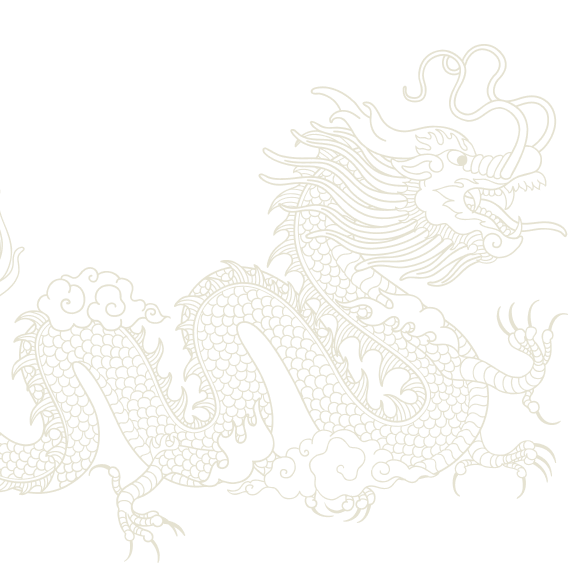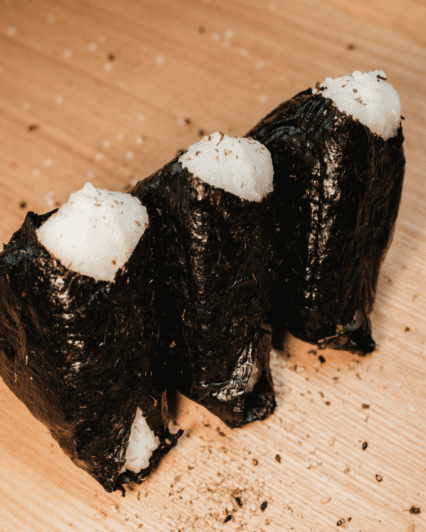Everything to Know About Making Dumplings
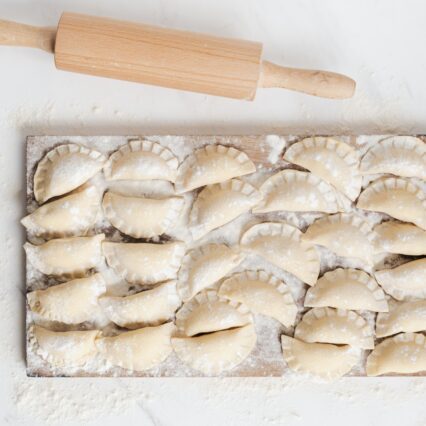
Everything to Know About Making Dumplings
Because we can’t go over every dumpling from every cuisine, we’ll focus here just on a few East Asian dumpling types, all of which are stuffed.
Here’s some dumplings and tips for making them at home:
First, the dumplings!
Again, you could write a 1,000-page bible of dumplings and still miss some, so we’re focusing on seven originating from China, Japan, and Korea.
These are:
Shui jiao: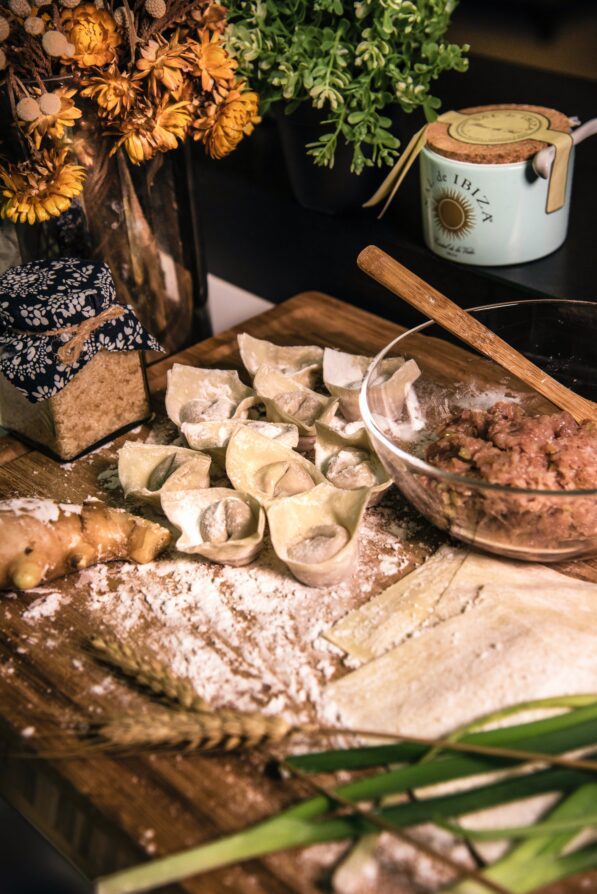
Essentially, these are Chinese potstickers of the boiled variety. They’re ubiquitous, and probably one of the first — if not the first — dumpling you think of.
Guo tie:
Up until cooking, guo tie are the same as shui jiao. Where they’re different is in being pan-fried instead of boiled, often close together so that they form one connected crispy bottom. Both guo tie and shui jiao are from northern China.
Wonton:
Also originating in the north, wontons are boiled like shui jiao but have a thinner wrapping. They’re thus extremely light; the name “wonton” roughly translates to “swallowing clouds.”
Xiao long bao:
With the spread of dumpling houses like Din Tai Fung, xiao long bao are enjoying a moment in North America lately. The term is used almost synonymously here to mean the tangbao soup dumplings, although there are also xiao long bao with leavened dough as well. Fillings are traditionally pork-based with aromatics, although others exist too. Unlike the previous dumplings, these originate in multiple regions in central and landlocked China closer to Shanghai and Wuhan.
Gyoza:
Now we’re switching it up from China to Japan. Gyoza are the Japanese adaptation of guo tie — although they can be boiled like shui jiao too — and are as such extremely similar. They’ll often have thinner wrappers and a slightly different balance of garlic and other aromatics, but gyoza’s origins aren’t hard to spot.
Mandu:
And on over to Korea! Mandu are Korea’s answer to all these dumplings. They’re also (usually) unleavened and can be boiled, steamed, or fried so are similar to gyoza, shui jiao, and guo tie. That said, they can also have a similarity to the dumplings from the cuisines of Central Asia and Mongolia, where these are thought to have originated.
Zongzi:
To end, let’s go back to China. Zongzi are different than the other dumplings here in that they have glutinous rice outside instead of flour-based wrapping. Traditionally, these are wrapped in bamboo leaves — other wrappings can be used too — and steamed for much longer than the cooking times for these other dumplings, almost similar to cooking tamales. Fillings can be savory or sweet; there’s a huge variety there.
Fillings for Home Dumplings
As is kind of the m.o. with filled dumplings everywhere, you can sort of take these in whichever direction you prefer. Sure, certain dumplings have traditional fillings that are most-commonly associated with them, but that’s the nice thing about home cooking: In the words of Parks and Recreation’s Ron Swanson, “I can do what I want.”
On the meat front, the most common fillings are often pork-based, as well as shrimp or pork-and-shrimp and, to a lesser extent, chicken. You could even do ground beef as well, although the end taste will likely be getting into pelmeni territory — bite-sized Ural and Siberian Russian dumplings — seeing as beef isn’t as traditionally common in these East Asian dumplings.
Otherwise, depending on your personal taste and the meat filling and how these flavors will mesh, there are lots of options for vegetable, herb, and aromatic components to add to that. (Obviously you can do just these if you’re vegetarian.)
For many of these dumplings, garlic and ginger are key additions. Shredded cabbage can also be crucial in certain varieties, either along with those aromatics or in place thereof. Chives and shiitake mushrooms can be tasty too; there are certain flavors and textures that tend to complement each other and for that reason be associated with certain types of dumplings, but again — at the end of the day you’re cooking for yourself and can put what you want in here.
Lastly on the filling front: Soup!
If you’re making the soup dumpling variety of xiao long bao — well actually, for starters, if you’re not used to making dumplings this may be a bit trickier so we recommend starting with simpler dumplings.
Soup xiao long bao have the obvious added filling which is more involved but kind of ingenious; stuffing a dumpling with soup should be more or less impossible, but counterintuitively xiao long bao aren’t stuffed with liquid itself. Rather, they’re stuffed with the solid-at-room-temperature gelatinized stock — usually pork — that’s essentially pure collagen. If you make homemade stock or broth, you know what we’re talking about. It’s the good stuff. (This is essentially the broken down connective tissue, so if you’re making these with kids it doubles as a biology lesson!)
During cooking, the steam heat melts the pork collagen — also known as aspic — and turns it into the piping hot soup. As you can imagine how concentrated it is, it’s super rich and tasty. Naturally though, while it’s important for all dumplings to make sure they’re totally enclosed, it’s extra important with xiao long bao to make sure the soup doesn’t seep out when steaming.
Tips for Making Different Dumplings at Home
And lastly, some more tips for keeping things running smoothly (and tasting as good as possible):
- The universal rule for pretty much everything: Don’t get so caught up in the filling ingredients themselves that you forget to season them. Sometimes this is
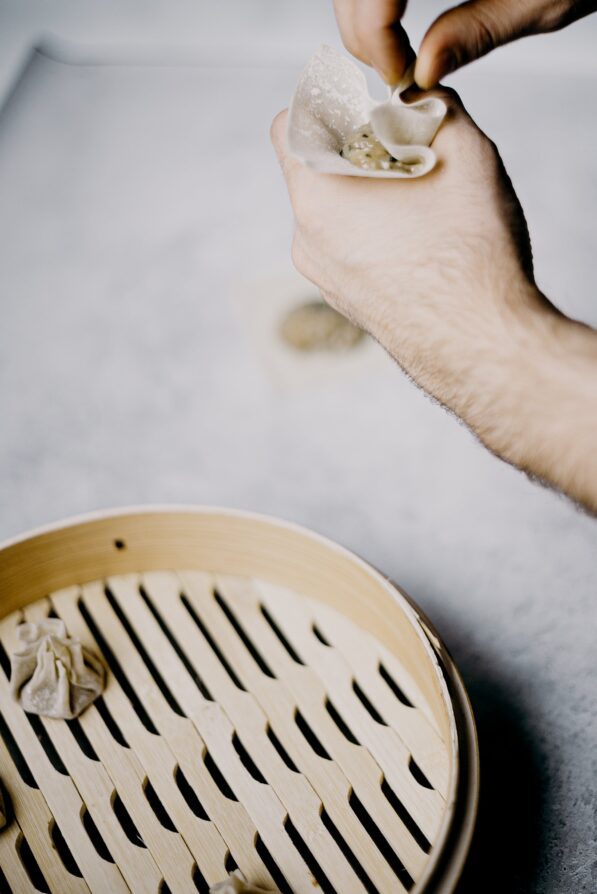 as simple as salt, pepper, and/or aromatics, but simplicity doesn’t imply unimportance.
as simple as salt, pepper, and/or aromatics, but simplicity doesn’t imply unimportance. - Don’t overfill the dumplings. It’s tempting to want to make each dumpling the motherlode, but doing so will risk the dumpling falling apart while cooking and then you’ll end up with a mess on your hands. Not to mention, a good ratio of filling to wrapper makes the best stuffed dumpling.
- Similarly, chop or slice your vegetables and aromatics pretty fine. This is mostly true of the hardier ingredients like cabbage, garlic, ginger, etc., while softer ones like chives and fungi don’t necessarily need to be as fine. Neglecting this could cause poking through a wrapper and lead to dumpling ruptures during cooking, just like an overfilled one.
- Yet another tip to keep your dumplings intact through cooking: Avoid air pockets as best as you can. These too can burst when moisture from the wrapper or filling turns into steam while cooking — especially tricky if you’re making gyoza, guo tie, or other pan-fried ones, since the subsequent rupturing, hot moisture, and oil can turn into a bit of a hairy situation.
- Finally, 2-4, make these in big batches and freeze whichever ones you don’t want immediately. (Do this by initially freezing them on a tray, then once done throw them into a bag together. Freezing them so they’re not touching first will keep them from sticking once you store them all together.) From there, these can be cooked from frozen for a quick treat. This is especially helpful since dumplings are usually a bit of an ordeal to make, so making more than you can eat now makes it extra worth it.
If you want to read more, Vivian Chan over at Food Network has some other tips worth checking out.
Really, dumplings are so great because there are so many different ways to make them — from wrappers to fillings to cooking methods. They’re extra great because making them easily doubles as a social activity; in many cultures this is a key component of certain dumplings.
Having a dumpling get-together is a fantastic excuse to see friends or family, and “it’s a day that ends in ‘y’” is a fantastic excuse to make dumplings.

